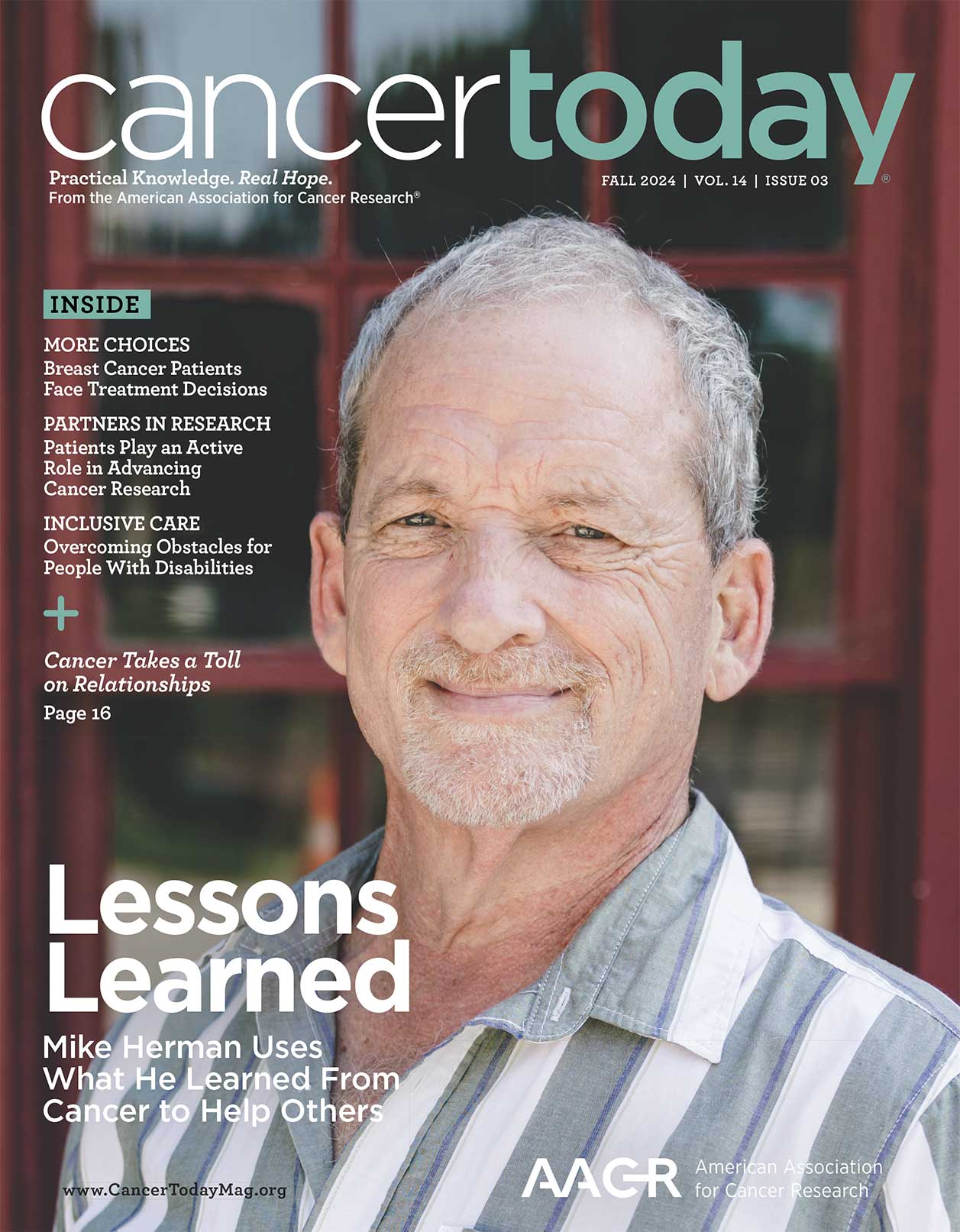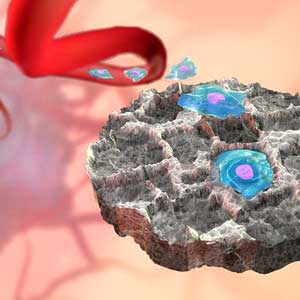-
Policy Matters
Racial and Ethnic Disparities in Multiple Myeloma Clinical TrialsThe AACR and the FDA presented joint recommendations that include broadening clinical trial eligibility and engaging the community in clinical trial recruitment.
by Kenneth C. Anderson, MD; Lola A. Fashoyin-Aje, MD, MPH; Nicole Gormley, MD; and Paul G. Kluetz, MD
-
Healthy Habits
One Drink, Too Many?Drinking at any level increases cancer risk.
by Ashley P. Taylor
-
Keeping CLL in Check
With recent advances in targeted treatments, people diagnosed with chronic lymphocytic leukemia have more options to manage the disease.
by Kendall K. Morgan
-
Robotic Surgery and Cancer
Using robotic assistants for cancer surgery has become commonplace. Whether cancer patients benefit when a surgeon uses a robot remains unclear.
by Sue Rochman
-
What is a Super Responder?
Researchers are investigating why certain patients have an exceptional response to a particular drug.
by Bradley Jones
-
Treating Cancer Patients With COVID-19: A New York City Experience
An analysis of cancer patients who were infected with the coronavirus and treated at Memorial Sloan Kettering Cancer Center in New York City suggests certain risk factors may predict more severe COVID-19.
by Anna Azvolinsky
-
COVID-19 Exposes Health Inequities
At a symposium held during a virtual meeting of cancer researchers, panelists discussed the disproportionate impact COVID-19 has had on Black and Latino Americans, as well as members of other minority groups.
by Kevin McLaughlin
-
Pediatric Oncologists Underestimate Needs of Minority Parents
Research describes how communication gaps can shift extra burden to parents who are members of ethnic and racial minority groups.
by Marci A. Landsmann
-
Pushing Progress Forward
NCI Director Norman E. “Ned” Sharpless addresses disparities and maps out plans for the future amid “profound upheaval.”
by Kevin McLaughlin
Cancer Talk
Let Me Tell You a Story About the Power of Medical Research
Ten-year-old Michael Methner told his story about being diagnosed with optic nerve glioma at the AACR’s Rally for Medical Research.
by Cancer Research Catalyst
Aggressive Approach to Very Advanced Cancer Does Not Extend SurvivalStudy shows no benefit from treatment for cancers at very advanced stages of progression. Researchers urge end-of-life planning for these patients.
by Kyle Bagenstose
The Affordable Care Act’s Impact on Access to Cancer CareA study at the AACR Cancer Health Disparities Conference found more people got quality cancer care after the ACA went into effect.
by Cancer Research Catalyst
Understanding the Federal Rule on Breast Tissue Density ReportsScreening mammography reports will include breast density and an explanation in common language.
by Sandra Gordon















